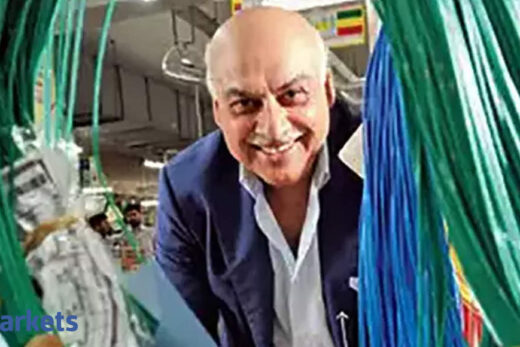Let us talk about the broader markets and the kind of pick up that you have seen there. Are there certain segments that you are more focused on? What about cyclicals?
The last few months have seen quite swift recovery in the economy. Equally important has been the Budget where the government has made the right noises in terms of their intentions to support the broader economy. In line with that, we are witnessing a lot of optimism as far as markets are concerned.
Clearly on the back of a very strong third quarter numbers and very strong management commentary, valuations across-the-board have scaled higher zones. In terms of economic tailwinds, the recovery has been much broad-based as was required. The government has provided the requisite support. At the same time, one needs to be cautious about the valuations at which we are seeing these sectors scaling new high. We would like to say that the last few months have been quite strong in terms of the returns and while the economy may still recover, global headwinds in terms of cost pressures are coming up.
There are talks of inflation and interest rates moving up. So, there are some worries which may mean that the near term returns going forward may not be as strong as what we saw in the last few months. But on the whole, we remain positive over the longer term. We like the way things are more broad-based now. There are lots of domestic cyclical sectors which are likely to perform given what was announced in the Budget and how the government is supporting the private sector with a manufacturing focus.
We are now going to be watching out for some privatisation and consolidation on the PSU side. Would you go for these stocks or would you stick with the front line private sector names at the moment?
The government’s intention is quite good as far as PSU privatisation is concerned. In the past, the privatisation exercise has been a Herculean task. The government had come up with the IDBI privatisation for a while and we are yet to see that happening. There are many issues linked to the employees unions. Even in terms of the efficiency and technology there is still a lot to achieve for these banks.
I would say that while the intentions are good, it may be a long haul before we see the privatisation taking place. A good step which the government has taken is to clean the books at least and that takes care of the bad book part of the PSU banks. That probably has the potential to accelerate the whole process. But it is still a wait-and-watch as far as we are concerned. We are more focussed on the private banks because we believe there is enough opportunity for these banks and private NBFCs to capture market share.
We see recovery taking place in the economy and banking being one of the important backbones, growth is likely to pick up there. We were positively surprised with the asset quality strength which these banks have shown and they are adequately placed as far as liquidity is concerned. It makes sense to be with the private banks and if things turn out much better than anticipated on the PSU side, at some point we will evaluate that but not at the moment.
Right now it seems that the rising US bond yield is the big concern and that is challenging the emerging market rally. Would you be a buyer now? Could we be headed for a time-wise correction or consolidation in the markets?
In terms of the return in the past few months, the next few months look a bit challenging. It is not just the challenge of rising interest rates, we also have to also face the challenge of rising raw material cost pressures which is going to have its own impact on profitability.
Over the next one or two quarters, it will be clear that what we witnessed in terms of very strong momentum in the third quarter was a mix of pent up demand as well. Clarity will emerge on how much of that tailwind goes off and how much of the growth we are able to retain, over the next two quarters along with the challenge on cost pressures and interest.
We believe that the market returns may sort of get more subdued over the next one or two quarters and one can keep looking at stock specific or sector specific opportunities at some point in time because the long term structural story has got a bit more visible with all the steps being taken by the government and how the corporates have evolved post the pandemic.
Where within the smallcaps, are you still finding valuation comfort?
We believe that there are specific segments in the small cap space which are still providing us value, Within the broader theme, . areas like agrochemicals and agri inputs is one where the outlook is becoming fundamentally strong.
The government has cleared their past dues as far as the subsidy is concerned and given the last two or three years of good monsoon and the inflationary food product prices, it bodes well for the farming sector and we believe that the overall agri, agri input as a segment within the small cap looks good.
Beyond that, we have the textiles as a category more importantly the export-oriented home textile businesses which are still trading cheaply. There are a lot of opportunities in terms of the demand momentum exports improving in the export market.
I would say that amongst three domestic cyclicals, auto ancillary is one segment which will revive as the cycle recovers. While the valuations have moved up, there is potential as far as those are concerned.
Lastly I would like to say that in the last one or two months, we saw the defensives slow down a bit within the pharmaceutical and healthcare segments. If they continue to underperform, it will mean a good time correction in these segments.
Broadly the small cap healthcare and pharma companies are trading within 18-20 times on a decent ROE of 20% odd. There is value which may get unlocked once the euphoria on the cyclicals slows down a bit.
What is the sense that you are getting when it comes to the entire microfinance sector?
Barring a few states, the overall outlook for the microfinance is improving and we have exposure in the small finance bank within our portfolio. We believe that in line with the overall improvement across the board as far as the economy is concerned, even the microfinance bit is seeing a recovery. We hope that once the normalisation takes place, these growth rates are likely to normalise and selectively we have a good constructive view on the microfinance lenders as well.
What about the capex revival theme? Are we on our way to seeing a significant improvement here?
As the government pushes more capex on the ground over a period of next 6-10 months, the private sector is likely start the capex momentum.
The last four, five years has been pretty low as far as the private sector capex is concerned and we believe that as the cycle recovers and as the demand momentum picks up, the capacity utilisation is still not high and will probably start improving and that will trigger the private sector capex.
Given what the government has done in terms of not just being a facilitator but playing a supportive role when we look at the chain of events — be it tax cut for the corporate sector, be it the PLI announcement and now the Budget having a lot of provisions on spending and privatisation — many of the activities will improve.
We definitely have a positive view but implementation is very important. We have lagged in terms of implementation in the past. Hopefully this time, given that we are fiscally challenged, the implementation may be strong and hence we believe that the overall private sector capex should improve. That means some of the capital goods and engineering plays will also start doing well over the next 2-3 years.



